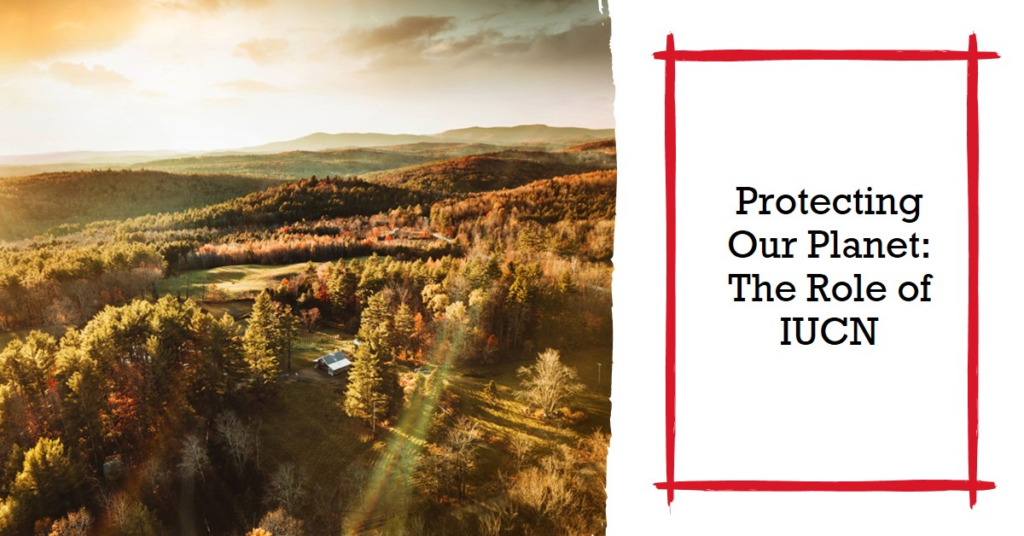International Union for Conservation of Nature (IUCN): Facts for UPSC Prelims

| Section | Details |
|---|---|
| Introduction | – Founded: 1948 – Type: Membership Union of government and civil society organizations – Expertise: Over 18,000 experts and 1,400 member organizations – Mission: To conserve nature and promote sustainable development |
| Objectives | – Conserving Biodiversity: Protect ecosystems, species, and genetic diversity – Promoting Sustainable Use of Resources: Environmentally sustainable and equitable use – Influencing Policy: Guide global environmental policies – Advancing Science: Provide research and data for conservation |
| Reports and Indices | – IUCN Red List of Threatened Species: Assesses conservation status of species – Red List Index (RLI): Tracks extinction risk trends – IUCN Red List of Ecosystems: Monitors ecosystem collapse risks – Annual Reports: Yearly activities and achievements – IUCN Green Status of Species: Measures species recovery success – Regional Red Lists: Assess species status at local levels – Urban Nature Index: Evaluates urban biodiversity efforts |
| Instruments | – Resolutions & Recommendations: Adopted during World Conservation Congresses – Guidelines: Best practices for sustainable management – Policy Briefs: Informing policymakers on key environmental issues |
| Structure | – World Conservation Congress: Supreme decision-making body – Council: Provides strategic oversight – Secretariat: Implements programs and operations – Commissions: Six expert networks focusing on specific areas |
| Subsidiary Organs | – National & Regional Committees: Facilitate member collaboration within regions – Task Forces: Address emerging conservation challenges |
| Committees | – Programme and Policy Committee: Advises on policies – Finance and Audit Committee: Oversees financial management – Governance and Constituency Committee: Manages governance and member relations |
| Initiatives | – The Restoration Initiative (TRI): Restoring degraded landscapes – ENACT: Scaling up nature-based climate solutions – Protected Planet: Global data on protected areas – Reverse the Red: Combat species and ecosystem decline – Save Our Species: Field conservation projects for endangered species – Integrated Tiger Habitat Conservation Programme: Focused on tiger habitats – Nature-based Recovery Initiative: Post-COVID nature-based investments – Sustainable Agriculture and Land Health Initiative: Promotes sustainable agriculture to address societal challenges |

